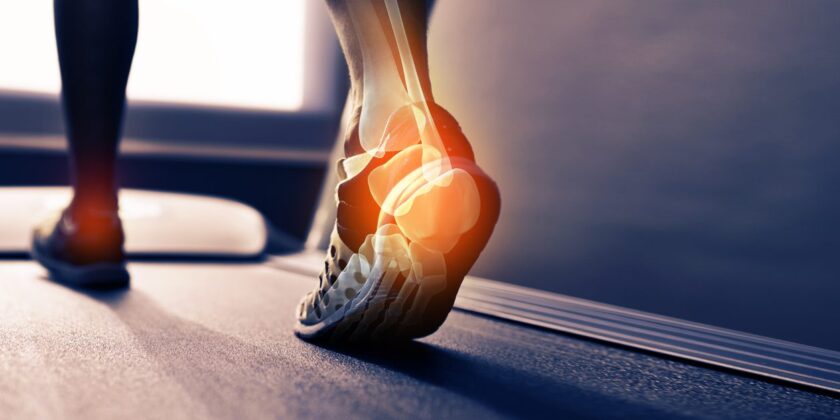Effective Leech Treatment for Chronic Tendon Injuries: What You Need to Know
How to Use Leech Effectively For A Tendon Injury With Chronic Complications: What You Need To Know
Chronic tendon injuries are common to the athlete, a person active, or anyone who does repetitive activities. These are debilitating injuries that lead to pain, swelling and reduced movement. Standard therapies such as rest, ice, physical therapy and medication may not always alleviate the symptoms. But another recent therapy that’s becoming popular is leech therapy. These herbs and remedies are used as natural therapies to promote healing and decrease inflammation in tendon ruptures, and bring hope to those with chronic illnesses.
What Are Chronic Tendon Injuries?
Tendon injuries happen when the fibres connecting muscles to bones become frayed, inflamed or torn. Long-term tendon injuries, called tendinopathies, arise when the injury does not heal well or the tendon is repeatedly stretched. Less common forms of chronic tendon damage include:
Tennis Elbow (Lateral Epicondylitis)
Achilles Tendonitis
Patellar Tendonitis (Jumper’s Knee)
Rotator Cuff Tendinopathy
Tendinitis of the Wrist or Hand.
These traumas can be permanent, painful, and restricted, impacting the ability to live life and work.
How Leech Therapy Treats Chronic Tendon Damages?
Leech therapy, or hirudotherapy, involves applying medicinal leeches to heal and reduce symptoms. Here’s how leech therapy treats long-term tendon damage:
Reduction of Inflammation
The biggest strength of leech therapy is the suppression of inflammation. Medical leech saliva contains bioactive molecules, like hirudin and other enzymes, that reduce swelling and inflammation around the inflamed tendon. This can result in less pain and increased mobility.
Improved Blood Circulation
Leech therapy increases blood circulation to the region. The anticoagulant properties of the leeches keep blood from clotting, ensuring a better delivery of oxygen and nutrients to the damaged tendon. This enhanced circulation speeds up healing and minimizes the risk of further injury.
Pain Relief
Leech saliva contains astringents, which can numb the affected area and provide pain relief naturally. It can relieve the long-term discomfort caused by tendon damage, which can enable patients to function more freely and easily.
Promoting Tissue Regeneration
Leech therapy also helps stimulate tissue regeneration and collagen growth, which is critical for tendon healing. Leech therapy accelerates repair of damaged tendons by stimulating the growth of new cells and tissues.
Prevention of Scar Tissue Formation
In tendon injuries that have been repaired over time, scar tissue can develop. Leech treatment can reduce scar tissue by optimizing the tissue regrowth, creating a looser, more functional tendon.
What To Expect From Leech Treatment for Tendon Injuries?
Leech therapy is performed on tendons by qualified medical professionals under controlled conditions. What to expect from a session:
Use of Medicinal Leeches: The doctor will gently apply medicinal leeches to the site. The leeches will sear themselves onto the skin and start feeding, releasing medicinal molecules into the surrounding tissues.
Time: Most sessions are between 30 to 60 minutes long, depending on the extent of the damage and the amount of leeches.
Treatment Post-Op: At the end of the session, the leeches are taken out and the site sanitized. The physician can apply bandages and provide follow-up care to make sure the wound heals properly and you aren’t infected.
Multiple Sessions: The number of leech therapy sessions required over a course of weeks can vary depending on the extent of the injury.
Leech Therapy Can Help with Recurrent Tendon Damage.
Pain Relief: Leech therapy can offer natural pain relief due to the astringent effects of leech saliva and are used to treat chronic tendonitis.
Accelerated Recovery: Leech therapy speeds the healing process and improves tendon repair through increased circulation and inflammation.
Reduced Scar Tissue: Leech therapy can eliminate the excess scar tissue that results in stiffness and injury.
Invasive Treatment: Leech therapy is an invasive, natural treatment that can be used for people who are in need of a alternative approach to dealing with chronic tendon injuries.
All-in-One Solution: Leech therapy works as an all-in-one solution that facilitates full recovery by supporting not only the wound, but also the body’s ability to heal and come back to equilibrium.
How to Ask Questions about Leech Therapy for Recurrent Tendonitis?
1. Are tendon injuries a good candidate for leech therapy?
As long as it is carried out by experienced experts in a clean facility, leech therapy is generally safe. Your healthcare provider should decide whether or not leech therapy is right for you.
2. How long does a leech therapy session last?
Leech therapy generally takes between 30 and 60 minutes, depending on the extent of the injury and how many leeches are applied.
3. How many leech therapy sessions am I going to require?
The number of sessions depends on how bad the tendon injury is and how well it heals. It might take several sessions over several weeks for patients to achieve optimal outcomes.
4. Does leech therapy hurt?
The sting of a medicinal leech is typically not painful because of the anaesthetic component of the leech’s saliva. In most patients, they experience almost no discomfort.
5. How does leech therapy restore tendon function?
Leech saliva contains enzymes that promote tissue growth and collagen synthesis, the components that repair tendon. This facilitates faster tendon healing and reduced scar tissue.
6. Can leech therapy be performed as a stand-alone treatment for tendon damage?
Leech therapy is typically administered as an adjunct to medical approaches such as physical therapy, sleep and medication. Be sure to discuss with your healthcare provider whether leech therapy should be included in your treatment.
Conclusion
Leech therapy is an effective, all-natural treatment for tendon injuries. Reducing inflammation, increasing blood flow, easing pain, and restoring tissue regeneration can make a huge difference in the time it takes to heal and optimize the results of tendon injuries. If you are suffering from a chronic tendon injury, talk to your physician about leech therapy to see if it might be a useful adjunct to your care.



